Clayton Greenberg
Long-Short Range Context Neural Networks for Language Modeling
Aug 22, 2017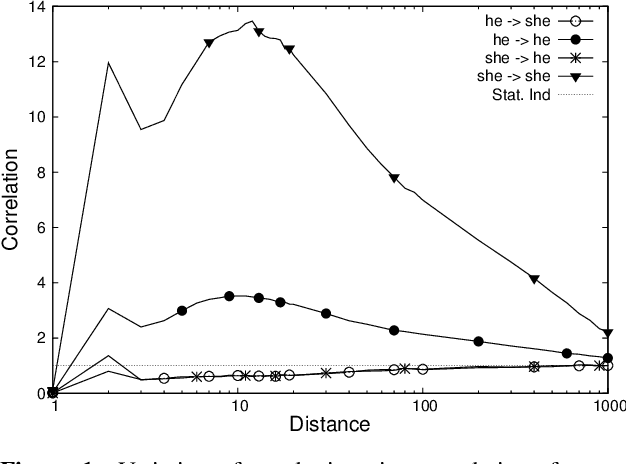

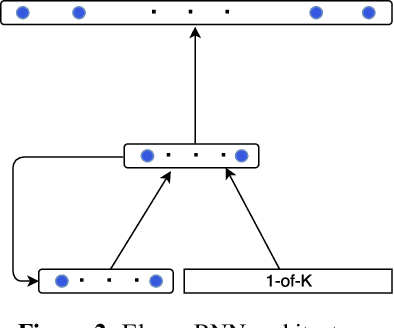
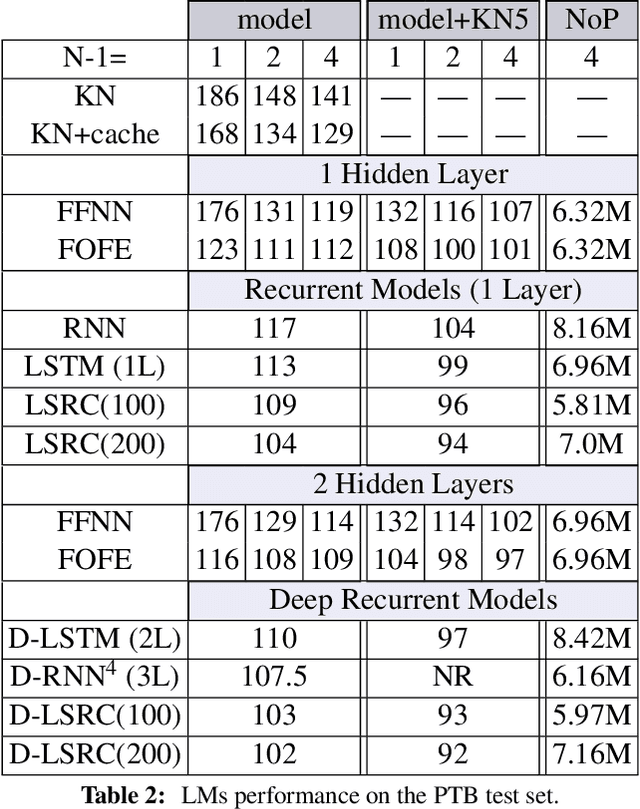
Abstract:The goal of language modeling techniques is to capture the statistical and structural properties of natural languages from training corpora. This task typically involves the learning of short range dependencies, which generally model the syntactic properties of a language and/or long range dependencies, which are semantic in nature. We propose in this paper a new multi-span architecture, which separately models the short and long context information while it dynamically merges them to perform the language modeling task. This is done through a novel recurrent Long-Short Range Context (LSRC) network, which explicitly models the local (short) and global (long) context using two separate hidden states that evolve in time. This new architecture is an adaptation of the Long-Short Term Memory network (LSTM) to take into account the linguistic properties. Extensive experiments conducted on the Penn Treebank (PTB) and the Large Text Compression Benchmark (LTCB) corpus showed a significant reduction of the perplexity when compared to state-of-the-art language modeling techniques.
Sequential Recurrent Neural Networks for Language Modeling
Mar 23, 2017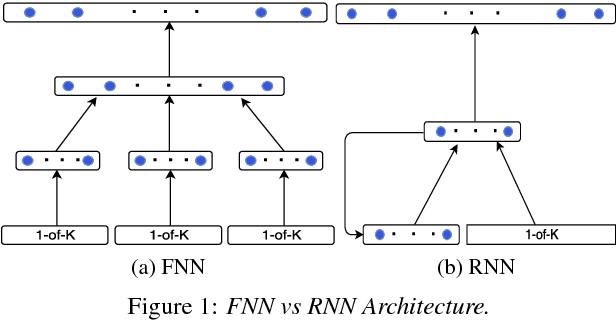

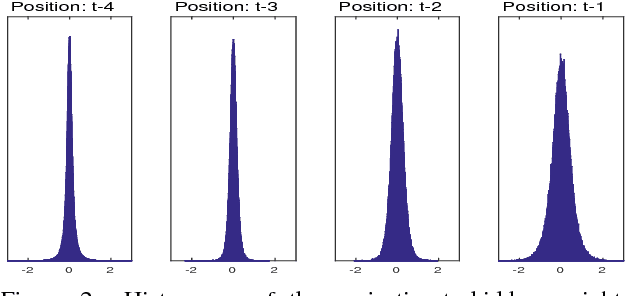
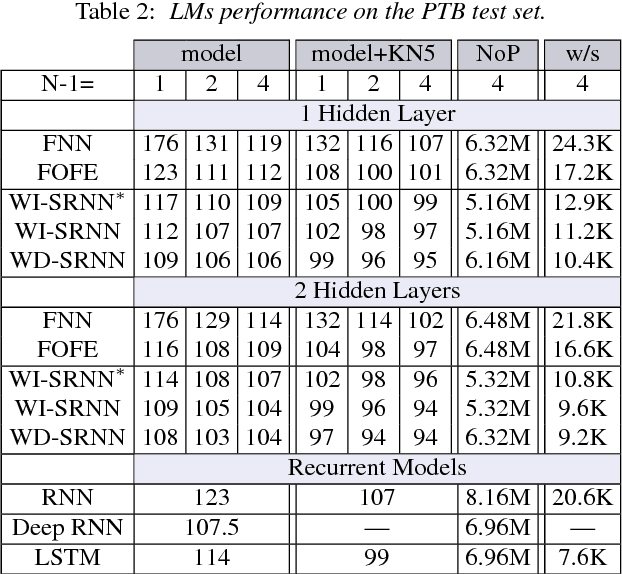
Abstract:Feedforward Neural Network (FNN)-based language models estimate the probability of the next word based on the history of the last N words, whereas Recurrent Neural Networks (RNN) perform the same task based only on the last word and some context information that cycles in the network. This paper presents a novel approach, which bridges the gap between these two categories of networks. In particular, we propose an architecture which takes advantage of the explicit, sequential enumeration of the word history in FNN structure while enhancing each word representation at the projection layer through recurrent context information that evolves in the network. The context integration is performed using an additional word-dependent weight matrix that is also learned during the training. Extensive experiments conducted on the Penn Treebank (PTB) and the Large Text Compression Benchmark (LTCB) corpus showed a significant reduction of the perplexity when compared to state-of-the-art feedforward as well as recurrent neural network architectures.
 Add to Chrome
Add to Chrome Add to Firefox
Add to Firefox Add to Edge
Add to Edge